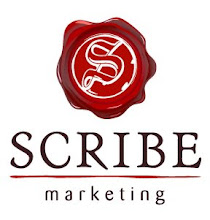eDocAmerica Health Tip: Sunshine, Friend or Foe?
Health Tip: Sunshine, Friend or Foe?
The Vitamin D Controversy
On occasion, when man has manipulated nature in an attempt to correct a perceived “problem”, things have backfired with the end result being worse than the original situation. Examples of this abound. In 1895, Thomas Austin released 24 wild rabbits on his property in Australia to improve his hunting options. The resulting rabbit “plague” is primarily responsible for the extinction of one-eighth of all mammalian species in Australia. The once-common and harmless cecropia moth (Hyalophora cecropia), one of the largest and most spectacular insects in North America, is now becoming rare in the Northeast United States as a result of a parasitic fly that was released to control gypsy moths.
The prohibition on sunlight exposure may be another example of unecessarly “meddling” into human lives. Clearly, excessive sunlight exposure and blistering sunburn carries with it the risk of premature aging of the skin and skin cancer, but sunlight also contributes to human well-being. Sun exposure appears to be even more important than dietary sources in getting adequate amounts of Vitamin D. This occurs when UV rays from the sun trigger vitamin D synthesis in skin. Vitamin D is a critical micronutrient in mantaining bone health, maintenance of a healthy immune system, and possibly even protection against the development of certain types of cancer. Most people are now aware of the importance of Vit D and calcium in preventing osteoporosis. The inverse relationship between higher vitamin D levels in blood and lower cancer risk in humans is best documented for colon and colorectal cancers.
It can be difficult to obtain enough vitamin D from natural food sources. Vitamin D occurs naturally in salmon, tuna and other oily fish, and is routinely added to milk. However, diet accounts for very little of the vitamin D circulating in blood. For many people, consuming vitamin D fortified foods and adequate sunlight exposure are essential for maintaining a healthy vitamin D status. In some groups, dietary supplements may be needed to meet the daily need for vitamin D. Furthermore, sunscreens with a sun protection factor (SPF) of 8 or greater will block UV rays that produce vitamin D. This has lead to the dilemma of avoiding sun exposure due to it adverse effects on the skin vs. getting enough sunlight to produce adequate amounts of vitamin D for optimal health.
Of course, there are reputable medical authorities who disagree with any additional sun exposure beyond that occurring with casual exposure. The American Academy of Dermatology (Academy) strongly advocates against getting vitamin D from sun exposure or indoor tanning. In their "Don't Seek the Sun" campaign, they list 10 reasons why getting vitamin D from your diet and practicing sun protection offer a healthier alternative. Foremost among those reasons are the more than 1 million cases of skin cancer occurring each year that are related to over-exposure of UV radiation from the sun.
The Office of Dietary Supplements of the National Institutes of Health offers a "middle-ground" approach to this issue. Their position is that, "An initial exposure to sunlight (10 - 15 minutes) allows adequate time for Vitamin D synthesis and should be followed by application of a sunscreen with an SPF of at least 15 to protect the skin. Ten to fifteen minutes of sun exposure at least two times per week to the face, arms, hands, or back without sunscreen is usually sufficient to provide adequate vitamin D. It is very important for individuals with limited sun exposure to include good sources of vitamin D in their diet."
Clearly this controversy is not yet resolved and I’m sure we will hear more of the pros and cons of sunlight exposure as research in this area progresses. My take on the subject is that some degree, e.g. 10 - 15 minutes a day, of sunlight exposure appears to be safe and does contribute to Vit D production. Concerns regarding adequate amounts of Vit. D, however, in no way validates prolonged sunbathing or use of tanning salons.
To register, just Click Here and follow the simple directions. The entire process should take less than 5 minutes. You'll be glad you did.
The Vitamin D Controversy
On occasion, when man has manipulated nature in an attempt to correct a perceived “problem”, things have backfired with the end result being worse than the original situation. Examples of this abound. In 1895, Thomas Austin released 24 wild rabbits on his property in Australia to improve his hunting options. The resulting rabbit “plague” is primarily responsible for the extinction of one-eighth of all mammalian species in Australia. The once-common and harmless cecropia moth (Hyalophora cecropia), one of the largest and most spectacular insects in North America, is now becoming rare in the Northeast United States as a result of a parasitic fly that was released to control gypsy moths.
The prohibition on sunlight exposure may be another example of unecessarly “meddling” into human lives. Clearly, excessive sunlight exposure and blistering sunburn carries with it the risk of premature aging of the skin and skin cancer, but sunlight also contributes to human well-being. Sun exposure appears to be even more important than dietary sources in getting adequate amounts of Vitamin D. This occurs when UV rays from the sun trigger vitamin D synthesis in skin. Vitamin D is a critical micronutrient in mantaining bone health, maintenance of a healthy immune system, and possibly even protection against the development of certain types of cancer. Most people are now aware of the importance of Vit D and calcium in preventing osteoporosis. The inverse relationship between higher vitamin D levels in blood and lower cancer risk in humans is best documented for colon and colorectal cancers.
It can be difficult to obtain enough vitamin D from natural food sources. Vitamin D occurs naturally in salmon, tuna and other oily fish, and is routinely added to milk. However, diet accounts for very little of the vitamin D circulating in blood. For many people, consuming vitamin D fortified foods and adequate sunlight exposure are essential for maintaining a healthy vitamin D status. In some groups, dietary supplements may be needed to meet the daily need for vitamin D. Furthermore, sunscreens with a sun protection factor (SPF) of 8 or greater will block UV rays that produce vitamin D. This has lead to the dilemma of avoiding sun exposure due to it adverse effects on the skin vs. getting enough sunlight to produce adequate amounts of vitamin D for optimal health.
Of course, there are reputable medical authorities who disagree with any additional sun exposure beyond that occurring with casual exposure. The American Academy of Dermatology (Academy) strongly advocates against getting vitamin D from sun exposure or indoor tanning. In their "Don't Seek the Sun" campaign, they list 10 reasons why getting vitamin D from your diet and practicing sun protection offer a healthier alternative. Foremost among those reasons are the more than 1 million cases of skin cancer occurring each year that are related to over-exposure of UV radiation from the sun.
The Office of Dietary Supplements of the National Institutes of Health offers a "middle-ground" approach to this issue. Their position is that, "An initial exposure to sunlight (10 - 15 minutes) allows adequate time for Vitamin D synthesis and should be followed by application of a sunscreen with an SPF of at least 15 to protect the skin. Ten to fifteen minutes of sun exposure at least two times per week to the face, arms, hands, or back without sunscreen is usually sufficient to provide adequate vitamin D. It is very important for individuals with limited sun exposure to include good sources of vitamin D in their diet."
Clearly this controversy is not yet resolved and I’m sure we will hear more of the pros and cons of sunlight exposure as research in this area progresses. My take on the subject is that some degree, e.g. 10 - 15 minutes a day, of sunlight exposure appears to be safe and does contribute to Vit D production. Concerns regarding adequate amounts of Vit. D, however, in no way validates prolonged sunbathing or use of tanning salons.
To register, just Click Here and follow the simple directions. The entire process should take less than 5 minutes. You'll be glad you did.



0 Comments:
Post a Comment
<< Home